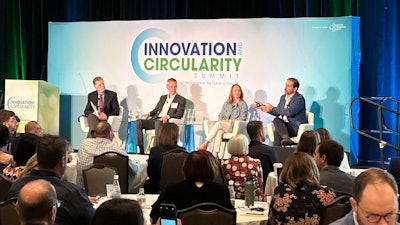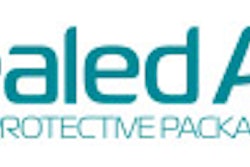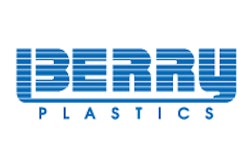
According to a panel of providers and early adopters of PCR-usage certifications, third party-certified label claims describing a package's recycled content profile are a means of assurance to the public. Certifications, they say, give consumers confidence that products and packaging labeled as recycled plastic are derived from a circular method. But understanding how certification works, and how converters and brands are audited for adherence, is key to developing real credibility throughout the value chain. That's especially true a little upstream, at the brand owner and converter level, long before a consumer gets his or her hands on a pack.
Two certifiers in particular--the ISCC PLUS certification guideline and SCS Global Services with expertise in chain-of-custody certifications among many others--were on hand to explain the value, alongside certification participants Berry Global and SEE (Sealed Air). They described an often skeptical CPG landscape that's slowly increasing adoption with education and better understanding of what makes certification schemes tick.
To the uninitiated, claims based on technical-sounding terms like the mass balance approach can seem like smoke and mirrors. But other industries have gone through the same rounds of skepticism long before chemical recycling's (and bio-based plastics') mass balance approach. Carbon credits and carbon offsets, for instance, or even clean energy credits in powering peoples' homes, were once seen as a means of fudging the numbers to make unrealistic claims. But as consumers and their energy, travel, and brand suppliers became more acquainted with those concepts, they largely have come around. After some education- and understanding-born confidence, these systems enjoy widespread credibility today.
The mass balance approach is a process of describing and accounting for the use of advanced recycled or bio-based feedstock in a final product when both recycled and virgin feedstock or bio-based and fossil feedstock have been used in the process. Since advanced recycling is a nascent tech, it's not often practical for a usage figure to be even close to 100%, given chemically recycled PCR's scarcity. So, the approach is a matter of averages. Some of that chemically recycled material comes into the facility, and some leaves the facility as packaging. Mass balance just accounts for how much of it is used, as a part of the whole. The tech is following a similar adoption journey as predecessor technologies in other industries.
"The biggest question that we get is what's involved in an audit, and what actually takes place. Once we start to demystify what we're actually doing, it creates an 'Aha' moment where people say, 'OK, I get it,'" said Matt Rudolf, Vice President, International Business Development SCS Global Services. "We want to know, in real numbers, how much circular [certified recycled] material came in the door, and how much came out. We want to know how you are applying [as packaging] what came in, and what's going out. There are standardized rules around that, and when we walk [brand owners or converters] through all of these processes, it becomes a different conversation."
Added Dr. Jan Henke Director ISCC, it's important that "we've established clear rules. Yes, it's more complex in this industry [than in similar predecessors in energy sectors]. But we can simply follow existing approaches, which are accepted by regulators."
How difficult is it for converters to get certified, and sell certified-recycled plastic packaging to brands? It's not as onerous as you might think. Certification of a material for converters usually takes about three months, from start to finish.
"There is complexity to it; I don't want to say that there's not," Rudolf said. "But it's also not the most difficult certification for the most part, even at the converter level. It's a traceability system following inputs, outputs, conversion factors, and having an accounting system that deals with a virtual inventory for mass balance accounting that corresponds to the physical material coming and going out." There are templates to help converters to get there, it's just a matter of having those systems in place. "It's eminently doable for a motivated company," he concluded.
After overcoming initial skepticism, and actively seeking out converters who have undergone mass balance-based certifications, brands' next what kinds of claims can be made. Answers vary based on the application, but according to Henke, it tends to be in the form of plain language, with an asterisk. For instance, 50% certified recycled material, with an asterisk leading interested consumers to more info about mass balance and advanced recycling. It's a start, and it's building recognition.
Still many brands are simply building the framework in incorporating this material and aren't quite ready to make it more public--at least until public recognition increases. But it's a journey, and both adoption and recognition are increasing over time. The most important thing, according to Diane Marret, sustainability director, Consumer Packaging North America, Berry Global, Inc., is not misleading the consumer. Absolute transparency on a complex subject, in common language the consumer can understand, is a balance, and worth ongoing exploration.
Panelists agreed that the FTC’s Green Guides, now under reconstruction after a recent period of invited public commentary, offer a chance to codify mass balance and chemical recycling into the overall toolkit for a circular plastic packaging future.
"One of the biggest opportunities [for advancement in this field] is for the Green Guides to explicitly include the mass balance approach," Rudolf said.
For now, ISCC seems to be the most visible and recognizable certification, and likely furthest along its adoption and recognition curves. Adding regulator support behind certifications should accelerate things.
"At some level, we can look at existing systems that are in place, and create comfort for regulators," Rudolf added. "This isn't novel, it isn't new. It's being borrowed from another industry. That's how we build regulatory support of mass balance accounting systems.”
After all, there isn't enough PCR out there to meet most brands' sustainability goals. Exclusion of a capable wrench in the toolbox would be a mistake, according to the panelists.
So, who communicates the concept of mass balance to the consumer? The panel agreed more generally that it falls on everyone in the supply chain. But more realistically, consumers only know, trust, or have relationships with the brand owners, so they end up being the default torch bearers. While the onus of communications falls on the CPGs and brands, upstream suppliers in converters and reprocessors share some burden in helping to support brands with accurate data. -PW























